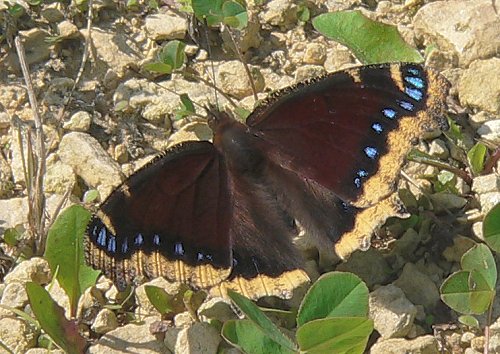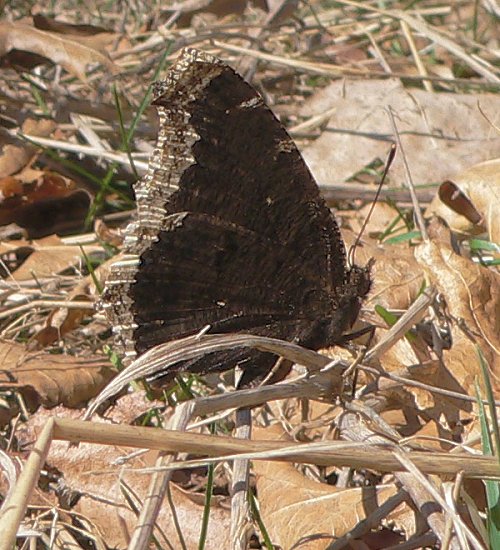Mourning Cloak Butterflies (Nymphalis antiopa) are large butterflies – about the size of monarchs. They have dark brown velvety wings with a line of blue spots and a yellow band along the outer edge of their wings.

The underside of their wings is dull brown and blends in beautifully with dead leaves, especially since the edges of the wings are jagged and irregular.

They are in a genus of butterflies called Tortoiseshells which overwinter as adults, in crevices or behind bark, and they sometimes emerge and fly on warm sunny days in the winter. They don’t usually take nectar from flowers – they more often nectar at tree sap, and are often seen resting on wet dirt or gravel.
Last week I found several Mourning Cloak caterpillars speeding across the sidewalk in our neighborhood in town. They were large and moving so fast that I was pretty sure they were wandering around looking for a place to make a chrysalis.

I put them in a jar with some Elm leaves – the caterpillars will eat several different kinds of tree leaves, but I had picked them up under Elm trees. As soon as the got into the jar, with some leaves and sticks around them, they quieted down. They climbed half-way up the sticks and settled in to make chrysalises. The smallest one didn’t make it – there must have been something wrong with it – but the other two are fine. Here’s one of the chrysalises.

Sharon Steiler just posted a story of a similar experience she had with Mourning Cloak caterpillars. Some years there are particularly large populations of certain butterflies – it looks like this may be an especially good year for Mourning Cloaks.
One of the chrysalises was host to some parasitic insects. I found a hole in the side of the chrysalis, and two small brown cocoons in the bottom of the jar.
But the last chrysalis hatched into a butterfly today – June 15. (It took 15 days to make the transformation from caterpillar to butterfly.)
Here’s the top of the butterfly

And here it is with its wings folded, on top of its used chrysalis – just before it flew away.

